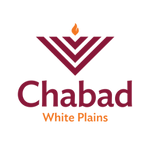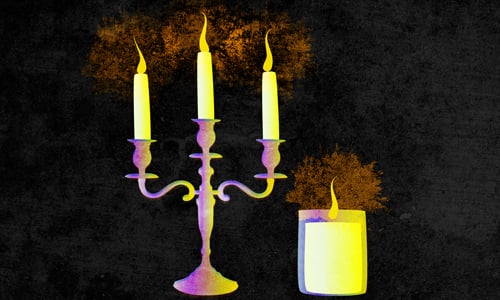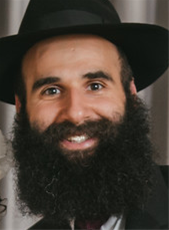Guides on Chabad.org often instruct us to use a “pre-existing flame” for lighting candles or cooking on Jewish holidays. Simply put, this means a candle or flame that was kindled before the onset of the holy day and has been burning since. Here’s its significance:
Jewish Holidays
On Jewish holidays, we may handle fire (and cook and bake) with certain restrictions, most notably, we cannot kindle a new flame from scratch (nor may we extinguish one).
This means that striking a match or even lighting a stove with a spark ignition system is forbidden. But, you can use one candle to light another, or turn on a gas flame with an already-burning pilot (or a candle, as long as you do not trigger the spark igniter).
Practically speaking, for lighting candles on the second night of a holiday (or on a holiday that follows Shabbat), you need to prepare a long-lasting flame or leave on a burner on your gas stove from which you can light your candles. The kosher aisle of your grocery store typically has candles that last for one day, two days, or three days, depending on your needs.
If you light a candle from your pre-existing flame and use it to light your holiday candles, be sure to set it down safely and not extinguish it when you are done with it.
The pre-existing flame can also be used for rekindling a gas light that has accidentally blown out, lighting a BBQ grill (which you then need to let burn until the gas runs out), or similar needs during the holiday. Read more about fire (and other things) on Jewish holidays.
Post-Yom Kippur Havdalah
As part of the Havdalah ceremony following Shabbat, but not holidays, we make a special blessing over fire. This flame is often kindled right before Havdalah.
On Yom Kippur, we say the same blessing but using a flame that has burned for the duration of the holiday.
Why?
The primary reason we make a blessing over fire after Shabbat is to recall G‑d showing Adam how to use fire to create warmth and light following the very first Shabbat of Creation. Read about that here.
The reason we make the blessing after Yom Kippur, on the other hand, is to demonstrate that fire was forbidden for use over the holy day and is now allowed. This is best demonstrated by using a candle that had been burning—but not handled—for the duration of the holiday.
As such, be sure to light a long-lasting candle before you light your holiday candles on the eve of Yom Kippur. Read more about the Yom Kippur candles here.




Start a Discussion